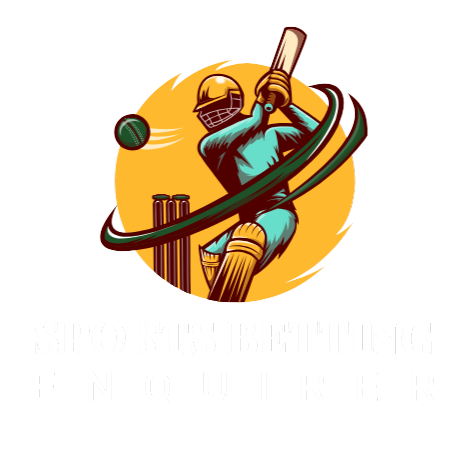In the high-stakes world of sports betting, where every decision can tip the scales between victory and loss, even the most seasoned bettors can find themselves navigating a maze of common pitfalls. From chasing elusive winning streaks to relying on flawed strategies, these missteps often turn promising opportunities into costly mistakes. This article delves into the familiar traps that bettors frequently encounter, offering a clear-eyed look at where things tend to go wrong-and how to steer clear. Whether you’re a casual fan or a dedicated punter, understanding these pitfalls is key to developing smarter, more resilient betting strategies.
Understanding Emotional Bias and Its Impact on Decision Making
When emotions take the wheel, clear judgment often takes a backseat. In sports betting, this means decisions driven by excitement, frustration, or even personal attachment can cloud objective analysis. Bettors may double down on losing teams simply because of favoritism or chase losses impulsively, hoping to recover quickly. This emotional interference not only skews risk assessment but also leads to repeated mistakes that could have been avoided with a more disciplined approach.
Recognizing emotional bias is the first step toward making smarter bets. Key signs include:
- Overvaluing favorite teams: Ignoring statistics and recent form in favor of personal preference.
- Chasing losses: Increasing bet sizes impulsively after a losing streak.
- Selective memory: Remembering wins vividly but forgetting losses.
By acknowledging these tendencies, bettors can introduce checks and balances that keep their emotions in check.
| Emotional Bias | Impact on Betting | Countermeasure |
|---|---|---|
| Overconfidence | Ignoring odds and statistical evidence | Stick to data-driven strategy |
| Revenge Betting | Chasing losses aggressively | Set strict loss limits |
| Anchoring Bias | Relying heavily on initial impressions | Reassess bets with fresh information |
The Dangers of Chasing Losses and How to Avoid Them
When emotions run high after a loss, the urge to reclaim what’s been lost can cloud judgment and lead to impulsive decisions. This “chasing” behavior often fuels reckless betting, where the focus shifts from strategy to desperation. Instead of carefully analyzing upcoming games or odds, bettors double down, risking larger sums in an attempt to break even quickly. This cycle rarely ends well, as it ignores the unpredictable nature of sports and the importance of discipline in wagering.
Recognizing the signs of chasing losses is crucial to breaking free from this dangerous pattern. Common warning flags include:
- Increasing bet sizes impulsively after a loss
- Ignoring established budgets or bankroll limits
- A focus on quick recovery rather than long-term gains
- Overconfidence in ‘sure bets’ following a losing streak
Implementing a structured approach can prevent these pitfalls. Consider the table below for a simple comparison between effective habits and risky behaviors:
| Effective Approach | Risky Behavior |
|---|---|
| Setting and sticking to a fixed bankroll | Increasing bets without limits after losses |
| Analyzing statistics and odds carefully | Making impulsive bets based on emotion |
| Accepting losses as part of the game | Chasing losses to recover quickly |
Misinterpreting Data and Statistics in Sports Betting
In the fast-paced world of sports betting, data can often feel like a beacon of truth. However, an overreliance on raw statistics without context can lead to costly missteps. Numbers tell a story, but without understanding the nuances behind them – such as player injuries, weather conditions, or even recent team dynamics – bettors risk making decisions based on incomplete or misleading information.
One common trap is the overemphasis on averages and percentages without considering sample size or variability. For example, a player’s shooting percentage over a few games might seem impressive, but a small sample size can exaggerate performance trends that don’t hold up over time. Equally misleading are correlations mistaken for causations; just because two variables move together doesn’t mean one causes the other. This is a subtle but critical distinction often overlooked by many.
- Ignoring external factors: Statistics rarely capture the impact of last-minute injuries or lineup changes.
- Chasing hot streaks: Hot streaks can be random fluctuations rather than sustainable performance.
- Misusing statistical averages: Relying solely on league averages without factoring in individual matchups.
| Statistic | Potential Pitfall | Real-World Effect |
|---|---|---|
| Win Percentage | Small sample size | Overvalued underdog bets early in the season |
| Player Averages | Ignoring role changes | Misjudging expected contribution after lineup shifts |
| Team Rankings | Static snapshot | Fails to capture momentum or morale swings |
The Importance of Bankroll Management for Sustainable Play
Managing your funds wisely is the cornerstone of long-term success in sports betting. Without a disciplined approach, even the most skilled bettors can quickly find themselves facing steep losses. Allocating a fixed percentage of your total bankroll per bet prevents emotional decision-making and reduces the risk of going broke after a losing streak. Consistency in stakes allows you to weather the highs and lows inherent in any betting activity, keeping your journey sustainable and enjoyable.
Consider adopting simple bankroll rules, such as:
- Betting only 1-5% of your total bankroll on any single event
- Reassessing your bankroll after every 10-15 bets to adjust your wager size
- Setting loss limits to avoid chasing losses impulsively
These principles create a buffer that absorbs variance and minimizes stress, shifting the focus back to thoughtful analysis rather than reckless gambling.
To visualize how effective bankroll management controls risk, take a look at the table below illustrating potential outcomes based on fixed vs. variable bet sizes over 20 bets:
| Betting Style | Starting Bankroll | Average Bet Size | Max Drawdown | Remaining Bankroll |
|---|---|---|---|---|
| Fixed Percentage (3%) | $1,000 | $30 | $150 | $900 |
| Variable Amounts | $1,000 | Varies | $600 | $400 |
Clearly, adopting a well-planned staking method not only preserves your capital but also fosters a mindset geared toward smart, controlled betting rather than impulsive risks.
Evaluating Tips and Expert Advice with a Critical Eye
Not all advice in sports betting carries equal weight-it’s essential to distinguish between informed insights and mere speculation. Many so-called “expert tips” are recycled narratives or built upon incomplete data, leading to misguided decisions. Avoid falling into the trap of blindly following trendy picks or popular pundits without understanding the rationale behind their suggestions. Developing a discerning mindset requires evaluating the context, verifying sources, and recognizing the difference between statistical evidence and anecdotal claims.
When sifting through advice, watch out for common red flags such as promises of guaranteed wins, calls to stake large sums without clear reasoning, or exclusive strategies that lack transparency. Remember, any reliable tip should come with explanations grounded in measurable performance indicators-not vague assurances. It’s beneficial to maintain a healthy skepticism, asking questions like:
- What data supports this prediction?
- Has this expert’s track record been independently verified?
- Are there hidden biases or incentives that might color their advice?
Below is a quick reference table outlining key elements to consider compared to typical pitfalls in sports betting advice:
| Evaluation Criterion | Credible Advice | Common Pitfall |
|---|---|---|
| Data Transparency | Shares clear stats and historical trends | Relies on vague or cherry-picked numbers |
| Risk Management | Encourages thoughtful stake sizing | Suggests all-in bets or chasing losses |
| Track Record | Demonstrates consistent, verified results | Offers unverifiable or anecdotal success stories |
Q&A
Q&A: Steer Clear – Common Pitfalls in Sports Betting Strategies
Q1: What are some of the most frequent mistakes sports bettors make?
A1: One of the biggest mistakes is betting with emotion rather than logic. Favoring your favorite team without analyzing the odds objectively can lead to poor decisions. Another pitfall is chasing losses-trying to recover money quickly often results in bigger losses. Additionally, many bettors neglect proper bankroll management or fall prey to betting systems that promise guaranteed wins.
Q2: Why is bankroll management so crucial in sports betting?
A2: Bankroll management is the backbone of sustainable betting. Without it, even a winning strategy can lead to bankruptcy if one places large bets without considering the total funds available. Properly sizing bets relative to your bankroll helps cushion the impact of inevitable losses and keeps you in the game longer.
Q3: How can bettors avoid falling into the “chasing losses” trap?
A3: Discipline and patience are key. Instead of increasing bet sizes impulsively after a loss, stick to your predetermined staking plan and give your strategy time to play out. Taking breaks after a losing streak to reassess your approach can also prevent rash decisions fueled by frustration.
Q4: Are there common misconceptions about betting strategies that lead bettors astray?
A4: Yes, several. For instance, some believe in “hot streaks” or “lucky numbers,” attributing randomness with patterns that don’t exist. Others overvalue complex systems or tipsters promising high returns without acknowledging the role of variance and house edges. Recognizing the limits of prediction and embracing probabilistic thinking is essential.
Q5: What role does research play in avoiding pitfalls?
A5: Research is indispensable. Understanding team form, injuries, weather conditions, and head-to-head stats can provide a clearer picture than relying on gut feelings. Bettors who incorporate data-driven insights are more likely to make informed, rational bets rather than risky guesses.
Q6: Can diversifying your bets reduce risk?
A6: Just like in investing, spreading your bets across different sports, markets, or bet types can reduce risk exposure. However, diversification isn’t a magic shield-each bet still carries risk, and overextending into unfamiliar areas without proper knowledge can backfire. Balance and informed choices remain crucial.
Q7: What’s the best mindset for someone looking to avoid common betting pitfalls?
A7: Approach sports betting as a long-term challenge, not a quick-money scheme. Accept that losses are part of the journey and focus on consistent, well-reasoned bets. Staying objective, managing your bankroll wisely, and continually learning will help you steer clear of many common traps.
Insights and Conclusions
In the ever-evolving world of sports betting, navigating the maze of strategies can be as challenging as the games themselves. By recognizing and steering clear of common pitfalls-from chasing losses to ignoring research-bettors can cultivate a more disciplined and informed approach. While there are no guaranteed wins in this unpredictable arena, a mindful strategy grounded in awareness and patience can turn the odds more favorably. After all, in sports betting as in sport, the smartest moves often come not just from bold plays, but from knowing which traps to avoid.



